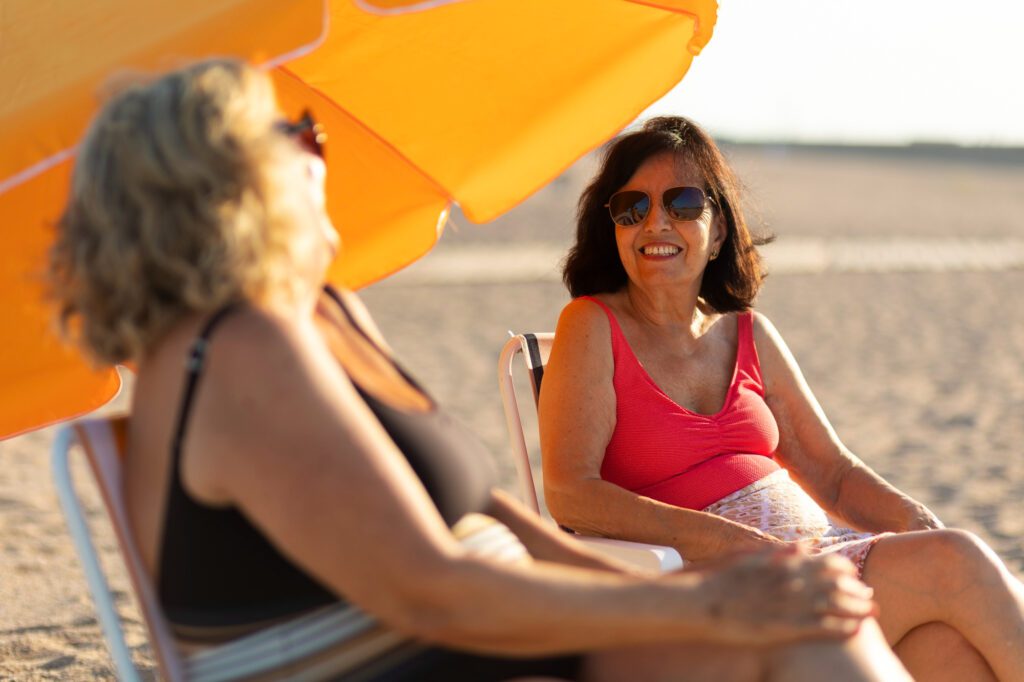1 in 3 Canadians think dangers of sun exposure are exaggerated: What to know about skin cancer risk, sunscreens & more
Nearly a quarter of Canadians believe you need to burn before you tan — but is it true?

Canadians are becoming less concerned about skin cancer risks, and misinformation about sun safety is growing, according to a new survey by the Canadian Dermatology Association (CDA). The CDA, in collaboration with Ipsos, has released its 2023 Sun Safe Behaviour Survey, highlighting key trends and perceptions about sun exposure among Canadians.
Tanning, cloudy weather, skin cancer risk & more
According to the CDA, concern for the risk of skin cancer has reached an “all-time low” among Canadians, despite skin cancer cases being on the rise. While the exact reasons for this decline are unclear, the report suggests that people underestimate sun exposure risks.
And, misinformation is on the rise. Despite the well-documented dangers of UV exposure, Ipsos noted more Canadians now believe “the dangers of sun exposure are exaggerated (32 per cent),” and there is “no need to use sunscreen when it is cloudy (32 per cent).”
A whopping 23 per cent of Canadians believe getting a sunburn is the first step to getting a tan.
While most Canadians acknowledge that using sunscreen is important, there’s a decline in other protective behaviors (like seeking shade or wearing UV-protective clothing). “Over two in 10 Canadians always employ the top three sun protection behaviours, while around one in ten never use them,” the report said.
The survey also revealed that only “about a quarter of Canadians can correctly identify the difference between UVA and UVB rays.” It pointed out that a third mistake one for the other and “the proportion who say they don’t know increased to [40 per cent].”
Meanwhile, concerns about sunscreen’s environmental impact have decreased, but the importance of choosing the right sunscreen remains high.
The survey said “Canadians view all characteristics of sunscreen as important, but to varying degrees.” It’s become important to choose sunscreen that is “hypoallergenic or has a low potential for skin irritation and is non-comedogenic.”
What Canadians really need to know about sun exposure
To debunk the misinformation that nearly a third of Canadians believe, Yahoo Canada spoke with Dr. Benjamin Barankin, a renowned Toronto dermatologist and founder of the Toronto Dermatology Centre, and Dr. Katie Beleznay, a clinical instructor at the Department of Dermatology at UBC.
Here’s what you need to know.
Risks of UV exposure
Barankin explained that increased sun exposure can cause:
- painful sunburns
- freckles and melasma
- cold sore reactivation
In the long-term, it can cause:
- brown sun spots (lentigines)
- redness and burst blood vessels
- wrinkles
- most importantly: skin cancers
Sun protection and sunscreens “have immediate benefits” of preventing these impacts.
“While Caucasians benefit the most from sunscreen, all skin types in fact receive various benefits from minimizing UV radiation,” Barankin said in an email.
Do you need sunscreen year-round, even in cloudy weather?
“Sun protection is obviously most important in the summer months, and at times of the day when your shadow is close to you (sun directly overhead),” Barankin explained, adding that’s usually between 10 a.m. and 4 p.m.
However, we still get about 80 per cent of the UV rays through cloud cover, he said, and UV can bounce off of snow and water and windshields.
“A dark and rainy day does not require sunscreen; that said, I’ve seen a number of patients who didn’t bother with sun protection because it was raining, and then a couple hours later, the weather improves, and they end up getting a sunburn and unnecessary UV radiation.”
Beleznay added most dermatologists recommend using sun protection year-round to minimize these risks.
What’s the difference between UVA and UVB rays?
According to Beleznay, UVA and UVB are both types of ultraviolet radiation emitted by the sun.
“UVA rays are the primary cause of premature aging of the skin, including wrinkles, fine lines, and age spots, but can also contribute to the development of skin cancers,” she explained.
“UVB rays are the main cause of sunburns and play a key role in the development of skin cancers, including basal cell carcinoma, squamous cell carcinoma, and melanoma.”
Barankin said UVA rays (“aging rays”) can pass through window glass, whereas UVB rays (“burn rays”) are blocked.
How to use sunscreen properly
What sunscreen to use?
Both experts recommend using sunscreen that is at least SPF 30. Those who are going to sunny and hot places, and those who have a photosensitizing medication or condition (like lupus or rosacea), are advised to use even higher SPF (SPF 60).
It’s also important to use a broad spectrum sunscreen that protects from both UVA and UVB rays.
Don’t forget SPF on your lips!
– Dr. Benjamin Barankin
Barankin said people who have dry skin could opt for a cream sunscreen, whereas gels are good for oily or hairy areas. SPF sticks are good for the face, and sprays “need to be rubbed in, shouldn’t be used near smoke or flames, and shouldn’t be inhaled.”
He added that sunscreens mixed with insect repellant “should not be used,” as sunscreens should be “generously applied and reapplied,” and insect repellant “used sparingly and less frequently.”
According to Beleznay, the most important thing is “to find a sunscreen that you like and will use.”
How much sunscreen is enough?
Beleznay said when it comes to sunscreen, “the biggest problem is under-application.” Here’s a good rule-of-thumb to follow:
- a quarter to a half of a teaspoon for your face and neck
- one ounce for your entire body
It’s also recommended to reapply every two hours, or after swimming (even with water resistant sunscreen).
Other sun protection
In addition, Barankin added, big sunglasses and broad-brimmed hats “are terrific add-ons.” He said the sun can cause cataracts (20 per cent of global cases) and skin cancers around the eye. Sun protective clothing with a UPF rating is also a great option for those who don’t like reapplying sunscreen.
Credit: By Karla Renic, Yahoo! Life
